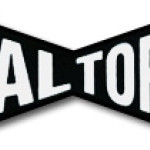- Industrie: Industrial valves
- Number of terms: 3113
- Number of blossaries: 0
- Company Profile:
A flow characteristic that lies somewhere between linear and equal percentage. It provides fine throttling at low flow capacity and an approximately linear characteristic at higher flow capacities.
Industry:Industrial valves
A device that is mechanically connected to the valve stem and will generate and transmit either a pneumatic or electric signal that represents the valve stem position.
Industry:Industrial valves
A device used to position a valve with regard to a signal. The positioner compares the input signal with a mechanical feed back link from the actuator. It then produces the force necessary to move the actuator output until the mechanical output position feedback corresponds with the pneumatic signal value. Positioners can also be used to modify the action of the valve (reverse acting positioner), alter the stroke or controller input signal (split range positioner), increase the pressure to the valve actuator (amplifying positioner), or alter the control valve flow characteristic (characterized positioner).
Industry:Industrial valves
A device which tells a control valve what to do. Controllers can be either pneumatic or electronic. There are pressure, temperature, ph, level, differential, and flow controllers. The job of the controller is to sense one of the above variables and compare it to a set point that has been established. The controller then outputs a signal either pneumatic or electronic to the control valve, which then responds so as to bring the process variable to the desired set point.
Industry:Industrial valves
A device which dispenses, dissipates, or distributes energy in a system.
Industry:Industrial valves
A constant (C<sub>v</sub>) that is used to predict the flow rate through a valve. It is related to the geometry of the valve at a given valve opening. See C<sub>v</sub>.
Industry:Industrial valves
A characteristic where flow capacity or (C<sub>v</sub>) increases linearly with valve travel. Flow is directly proportional to valve travel. This is the preferred valve characteristic for a control valve that is being used with a distributive control system (DCS) or programmable logic controller (PLC).
Industry:Industrial valves
A commonly used term to describe the ability of a control valve or regulator to shut off completely against any pressure on any fluid. Unfortunately, it is completely unrealistic. Control valves are tested to ANSI B16. 104 and FCI 70-2-1976 which is the American National Standard for Control Valve Seat Leakage. This standard uses 6 different classifications to describe the valves seat leakage capabilities. The most stringent of these is Class VI which allows a number of bubbles per minute leakage, depending on the port size of the valve. The correct response to the question “Will that valve go “Bubble Tight”? is to say this valve is tested to meet Class VI shutoff requirements.
Industry:Industrial valves
A bonnet with a packing box that is extended above the body to bonnet connection so as to maintain the temperature of the packing above (cryogenic service) or below (high-temp service) the temperature of the process fluid. The length of the extension depends on the amount of temperature differential that exists between the process fluid and the packing design temperature.
Industry:Industrial valves
A bonnet which uses a bellows for sealing against leakage around the valve plug stem.
Industry:Industrial valves
